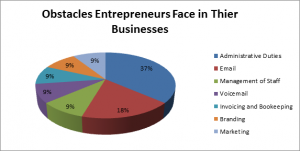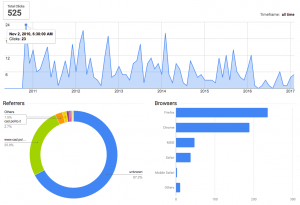
Tired, deflated, hanging by a thread: These are just a few keywords your average American worker might use to describe themself these days. And who can blame them, as we head into year three of the pandemic? Compared with the “before times,” remote employees are working longer hours, attending more meetings, and juggling more communication channels. According to Zendesk, more than a quarter of working American adults say they now suffer from some form of depression, and nearly 60% report negative effects of workplace-related stress.
So, it shouldn’t have been a surprise when 47.4 million Americans resigned from their jobs last year—with another 52% eyeballing the exit. To be sure, myriad factors have contributed to this mass exodus, but it’s worth noting that toxic culture is the top predictor of voluntary turnover. In fact, when compared with salary, toxic cultures are 10.4 times more likely to push an employee out the door, according to the MIT Sloan Management Review.
Noxious work environments don’t discriminate by industry, but client-facing agencies are one particular company that have become fertile ground for culture-driven employee burnout. We don’t have to look far to see why: Agencies are in the business of keeping clients happy, so client relationships often take priority over employees’ mental health and job satisfaction. But trying to keep every client satisfied all the time is a fool’s errand, and when clients are unreasonable or disrespectful—and that behavior goes unchecked—it puts undue strain on the employee-employer relationship.
So, when we look at how to prevent employee burnout, we must also talk about how to deal with toxic clients. Try a few of these tips.
Leverage an employee feedback tool
You can’t fix problems you don’t know about. In order to monitor the status of your clients (and more important, how your team members perceive those relationships), introduce a feedback system. Remember that employees aren’t always forthcoming with information, especially if they suspect that it’ll come back to bite them during performance reviews.
However, surveys have show that employees may be more inclined to provide feedback about a company, their workload, and the state of the organization’s culture if it were anonymized. For reference, out of the numerous employee feedback tools are available, our company uses Officevibe to collect anonymous feedback. It allows team members to report feedback and start a conversation with senior leadership if things aren’t going well. It has helped us get in front of many tricky situations.
These kinds of feedback loops are also critical in preventing burnout that’s not directly tied to toxic behavior. Sometimes, employee burnout stems from boredom. Consider a few key questions: Are you asking your employees to complete repetitive, monotonous tasks? Are you constantly assigning them run-of-the-mill clients that don’t help them grow?
This is important information you can derive from employee feedback tools. Then, you can take steps to combat employee “bore-out.”
One way we prevent this pernicious force at our company is to periodically rotate teams to allow for cross-training, expose them to multiple clients and perspectives, and keep their work experiences fresh.
Avoid the trap of perverse incentives
Employee burnout also happens when leaders ask their people to do too much for too many higher-ups. In my experience, I’ve seen agencies constantly and notoriously take on more work than their teams can handle—even though doing so doesn’t support people’s long-term mental health, in addition to resulting in expensive churn.
Therefore, make sure you are not falling into the trap of perverse incentives. What are perverse incentives? Let’s say you financially reward middle managers if their team gets more work done quicker. Without any additional context or instruction, those managers may choose to use the stick over the carrot—such as by working their teams too hard for too long or engaging in combative communication. In other words, if managers’ bonuses hinge on their direct reports’ productivity, they may display toxic behavior that feeds into employee burnout.
Instead, align your incentive structure to ensure that working your teams harder is never directly incentivized. For instance, we employ incentives that function across the team, such as setting reasonable client expectations and hitting them together.
Let go of that laissez-faire attitude
One of the best ways to motivate employees is to empower them to speak up when they see something that conflicts with your organization’s values. For instance, if our clients push their poor planning onto our team, we push back. I won’t let a client’s procrastination become my team’s stress.
That said, do your client-facing employees have someone to turn to after an inappropriate client interaction or when a client makes an unreasonable or problematic request? If the answer is “no,” then you need to establish a clear chain of command.
Give employees an internal point of contact they can turn to when something needs to be escalated to leadership. There will be plenty of situations where your employees feel comfortable defusing on their own, but giving them proper internal support will help prevent employee burnout and teach them how to deal with toxic clients by example.
And, if you do find yourself entangled in a toxic client relationship, don’t be afraid to put your foot down. This might mean leaving money on the table, but acting in the best interest of your team is always a better long-term investment. By committing to transitioning away from fraught client relationships, your team will know you have their backs.
Chris Cardinal is a founding member of Synapse Studios, an app consultancy that builds custom software for startups, enterprise, government, and other entities.
Fast Company , Read Full Story
(23)







